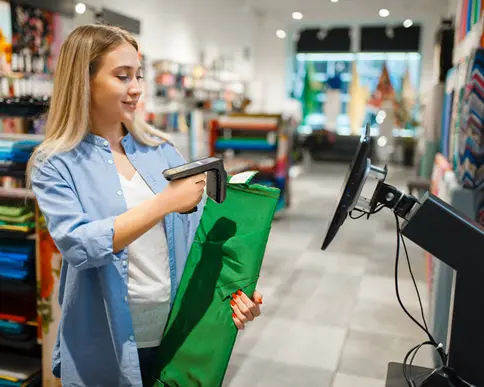Brief Introduction
RFID technology is a wireless communication technology that can automatically identify and read information embedded on tags through electromagnetic fields. In retail store management, RFID readers have been used in every corner of the store to assist in better and easier management of the store.
RFID technology is a wireless communication technology that can automatically identify and read information embedded on tags through electromagnetic fields. In retail store management, RFID readers have been used in every corner of the store to assist in better and easier management of the store.
1. Inventory management
The traditional inventory management method mainly relies on manual inventory counting, but this method has problems such as low efficiency and error-prone. With RFID readers, stores can easily monitor and manage inventory in real time. Each product is equipped with an RFID tag. By continuously scanning these tags with an RFID reader, the store administrator can know the inventory status of each product at any time, so as to replenish the goods in a timely manner and avoid out-of-stock situations.
2. Store merchandise display and display
By equipping merchandise with RFID tags, stores can use RFID readers to automatically sense the location and quantity of merchandise and make adjustments based on demand. This greatly improves the efficiency and accuracy of product display, not only saves labor costs, but also improves the store image and shopping experience.3. Improve the efficiency of cargo circulation
In traditional supply chain management, tracking and tracing of goods often requires a lot of manual operations and time, and is prone to errors and delays. With RFID readers, the transportation process of goods can be monitored in real time. It can not only track the location and status of goods, but also provide real-time logistics information to help stores and suppliers adjust and arrange the transportation of goods in a timely manner.4. Anti-theft and anti-counterfeiting work
By installing electronic tags on merchandise, stores can monitor the flow of merchandise in real time. Once a customer leaves the store with unpaid goods, the RFID reader will automatically alarm and remind the store staff to deal with it. At the same time, RFID readers can also be used in conjunction with anti-counterfeiting labels to improve the anti-counterfeiting performance of goods, ensure that consumers purchase genuine goods, and enhance the brand image.last
- Passive RFID Reader: The Ultimate Guide to High-Volume, Low-Cost Asset Tracking2025-12-26
- Industrial Mobile Computer Workstation: Definition, Selection and Implementation - Building a New Mobile Infrastructure for Smart Manufacturing2025-12-25
- Handheld Computers Reshape Inventory Supplies: Towards a Real-Time, Accurate, and Efficient Digital Core2025-12-25
- Long-range RFID Reader Application Guide: Technical Principles and Warehouse Management Practice2025-12-25
- Why Use a Handheld Scanner for Inventory Management? A Data-Driven Guide to Modernizing Your Operations2025-12-23
